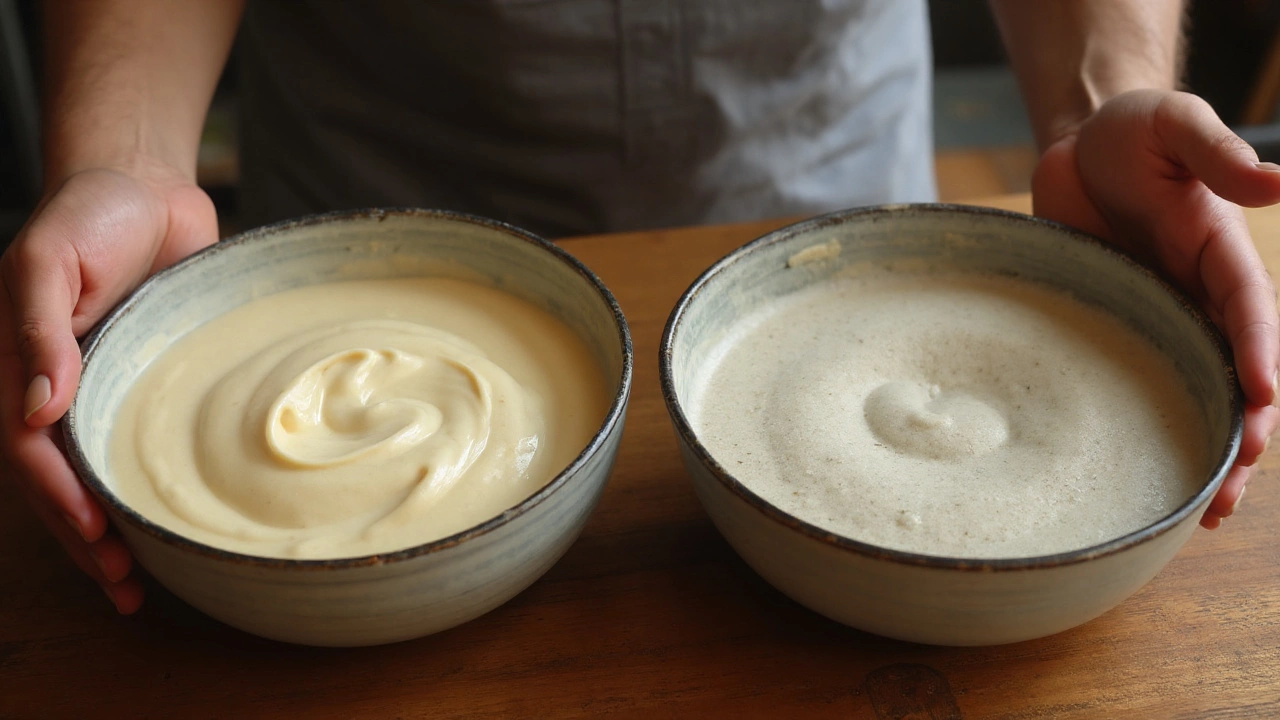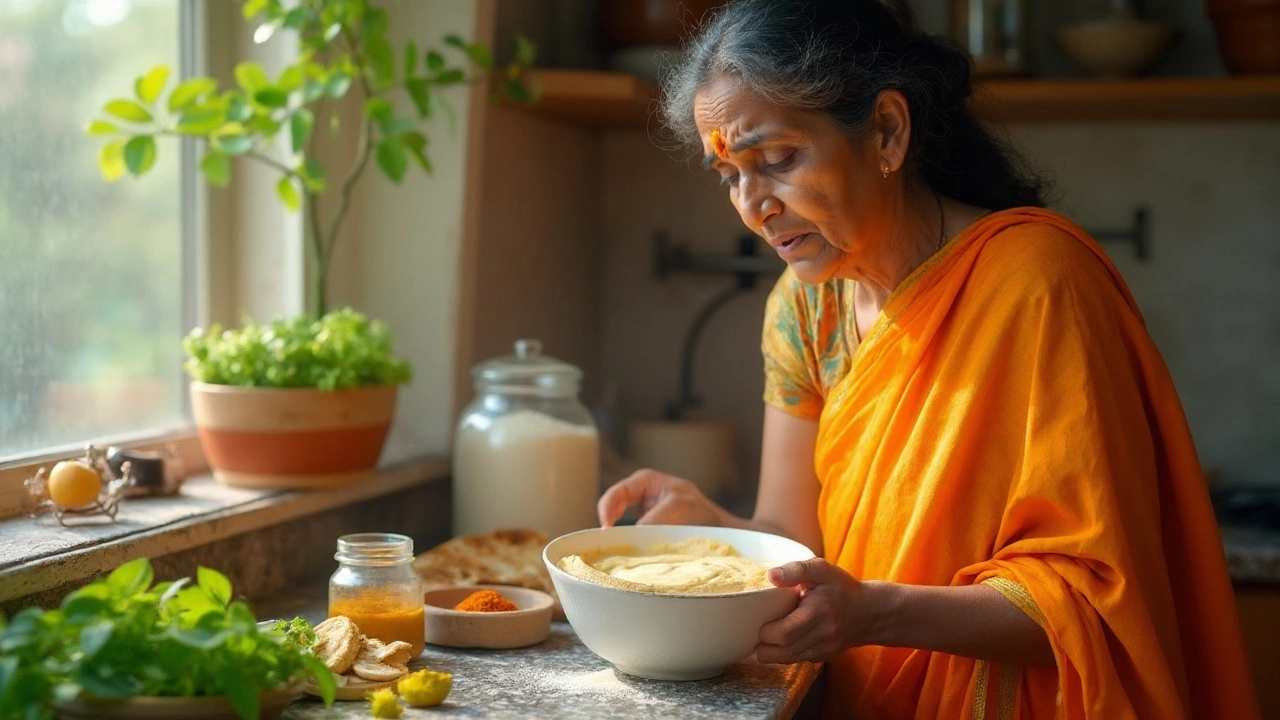Forget soggy mornings or bitter disappointments—nothing turns your breakfast plans upside down like opening your fridge to find a questionable tub of dosa batter. We've all been there, poking the batter, giving it a sniff, hoping it’s still safe for those crispy, golden dosas. But is the nose test really reliable? What about the little bubbles popping up, or the playful tang nudging your senses? Wrong call, and your kitchen ends up smelling of defeat for the rest of the day. Dosa batter is deceptively simple—just rice and urad dal, right? But even veterans slip up when it comes to judging whether it's past its prime. The last thing anyone wants is funky, inedible dosas—or worse, an upset tummy. Making sense of it all is trickier than most people admit. If you’ve stood over your batter second-guessing yourself, you’re definitely not alone.
Understanding Dosa Batter Fermentation and Shelf Life
Most people think dosa batter is indestructible because it’s fermented. Not really. Fermentation is what gives dosa batter its signature tang and airy lightness, but it also makes it more unpredictable. Good fermentation needs warmth and a few hours—and if you’re impatient like me, you might try to rush things under a lamp or in the oven. But once the batter hits peak fermentation, those natural yeasts and bacteria start breaking things down even further. That first day or two, fresh off the stone grinder or mixer, the batter is rich, slightly sour, and whipped up with bubbles. Store it properly and it’ll last up to three or sometimes even five days in the fridge. But even then, the shelf life depends on the weather, your fridge temperature, and even how clean your utensils are.
India’s monsoons—hot, humid, and nearly lawless—wreak havoc on dosa batter. Back when my mother-in-law visited from Chennai, she’d warn me about storing batter too long: 'Hot weather, Aria, and you'll wake up to a science project.' She wasn’t wrong. Fermentation goes into overdrive when it’s hot and sticky. The shelf life can shrink to two days or even less. On the flip side, in winter, batters can take forever to ferment or just lose their spring.
It isn’t just the environment. Even a drop of leftover sambhar or chutney in your batter container invites a world of unwanted bacteria. You want only the right fermentation—too many wild guests, and things turn unpleasant. The right storage, in a sealed container in the coldest part of your fridge, helps. Glass containers outlast plastic for freshness, trust me. Making smaller batches is the best way to avoid big batches going bad, especially if you live somewhere warm. But even with perfect care, there’s a limit—typically no more than five days. Go beyond, and you risk more than just taste.
Warning Signs: How to Know if Your Dosa Batter Has Gone Bad
Okay, so how do you really know when your dosa batter has crossed over to the dark side? Spoiled dosa batter isn’t shy about showing its true colors (and smells, and textures). First, trust your senses. The original batter should smell sour but clean—a bit like fresh yogurt, maybe even lightly floral if you’ve nailed the fermentation. If instead, it’s giving out a sharp, rotten, or beer-like stink, it’s time to say goodbye. Most molds affecting batter are invisible for a while, but eventually, you might spot colorful stains—pink, green, or black. That’s your cue to toss the whole thing, no second guessing.
Texture tells its own story. Batter, fresh and lively, is fluffy, thick, and pours smoothly—almost like pancake mix, but lighter. When dosa batter spoils, it gets runny or slimy, sometimes separating into layers. If you see a puddle of water sitting on top and stirring it only makes it worse, that’s another red flag. Slime is downright dangerous; do not try to save it.
Then comes taste. Yes, sometimes, we all sneak a quick lick. Don’t swallow—just a dab is enough. Bad batter is ferociously pungent, with notes that’ll make your mouth pucker or worse, recoil. If there’s even the faintest bitterness, chuck it out. No one’s dosa dreams are worth that risk.
Sometimes, spoilt batter looks, smells, and tastes almost normal but does weird things in the pan. Does the dosa disintegrate, refuse to crisp up, or leave behind a weird aftertaste? That’s not the pan, it’s the batter. If you’re unsure, make a tiny dosa as a final test. Watch its color, taste, and smell while cooking. If anything feels off, be safe and discard the batch.

Factors That Make Dosa Batter Go Bad Quickly
Dosa batter’s sworn enemies aren’t just time and heat. They include dirty hands, contaminated water, old rice, and stray food crumbs. I learned to always use filtered or boiled and cooled water. Unfiltered tap water, especially in Indian cities, introduces all kinds of bacteria, many of which play spoiler. The age of your rice or dal matters too—older grains ferment unpredictably. A little leftover batter mixed with fresh might save fermenting time but speeds up spoilage, because the older microbes multiply like mad. Another surprise culprit: humidity inside your fridge. Old vegetables and leaky containers can raise it enough so your batter treads into dangerous territory even if the temperature is right.
Even utensils matter. Some people use the same spoon for chutney and dosa batter. Bad move. Cross-contamination is the most silent, fatal mistake for any home cook. Always scoop out only what you need for the meal, and don’t put back leftovers—freshly added warm batter into old, cold batter creates a bacteria buffet. If you’re prepping for a party and making a giant batch, divide it into small containers so you’re not opening the whole thing every day.
Power cuts or frequent fridge openings can turn the coldest shelf warm, especially in summer. A study by the Indian Institute of Food Processing Technology found that dosa batter left out at just 30°C (a regular July in Delhi) will go from perfect to spoiled in under 16 hours. That means, a single night of power outage, and your batter could be unusable by morning. This is why many people in South India start from scratch every day—fresher batter, fewer heartbreaks.
Smart Storage Tricks for Longer-Lasting Dosa Batter
If you're tired of tossing batter, a few tricks can really stretch its shelf life. Start by grinding your rice and dal super-fine; this actually gives air and good bacteria more to work with, ensuring a consistent ferment. I use a stone grinder—I know, old school, but it’s worth it for better texture and controlled fermentation. If you’re using a mixer, let it cool between pulses so it doesn’t heat up the batter, which can encourage spoilage before you even finish grinding.
Getting the right fermentation temperature matters. If your kitchen is chilly, wrap your batter bowl in a thick towel and keep it in the oven with just the light on. During hot spells, ferment only half the normal time and move it to the fridge as soon as those classic bubbles form. Once it’s in the fridge, switch to a glass container with a tight-fitting lid or even cover with a plate—not airtight, just enough to keep air out but avoid trapping moisture. Always keep the container at the back of the fridge, where it’s coldest.
If you want super longevity (my sister-in-law swears by this), add a sprinkle of salt to the batter right before refrigeration, not before fermentation. Salt slows down further fermentation and keeps things fresh for an extra day. Another popular method: freeze portions in silicone molds. Thaw overnight in the fridge and you’re ready to go. Just never freeze batter that already smells iffy—freezing won’t revive it, only trap the funk until you open it.
Avoid using wet or dirty spoons. Scoop only the amount you need each time, and never mix fresh batter back with old. Got too much batter? Make uttapam, paniyarams, or even instant idlis. No shame in getting creative to avoid waste.

Freshness Myths vs. Reality: What Really Works?
“If it fizzes, it’s fine!” People like to say this, but that’s not always true. Even spoiled batter can bubble, thanks to wild yeasts. Aroma is a better judge than bubbles! Don’t just trust folklore—like the aunties who swear leaving a neem leaf on top will preserve the batter for a week. Neem does have antibacterial properties, but batter still turns with time, especially in tropical weather.
Some think adding a little yogurt after two days revives sour batter. In reality, it only masks the sourness but doesn’t make the batter safer if it’s already spoiled. The only real fix is prevention—proper storage, freshly cleaned containers, and a good look-and-sniff test. If you want a mild batter flavor, make smaller batches and use them up in 48 hours. Want it extra tangy? Let it ferment a bit longer, but keep a close eye.
Never mix leftover dosa made from old batter back into the batter container. It’s tempting to use it as a starter, but you’re just asking for trouble—cross-contamination is a silent saboteur. If you’re prepping dosa for guests or a special breakfast, plan ahead to make fresh batter the night before. Nothing replaces fresh, well-fermented batter.
If you’re ever in doubt, just remember the golden rule: when in doubt, throw it out. Spoiled dosa batter isn’t worth risking a stomach ache. No matter how careful you are, even the best cooks get caught off-guard once in a while. When that happens, laugh it off and start over—after all, fresh dosas are always worth the wait.
